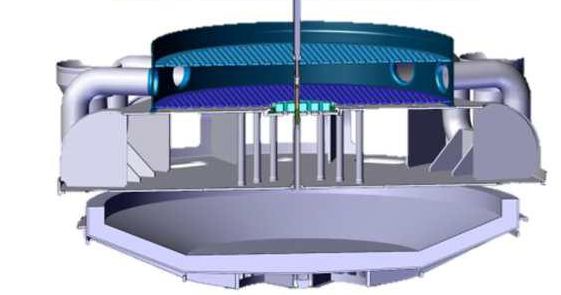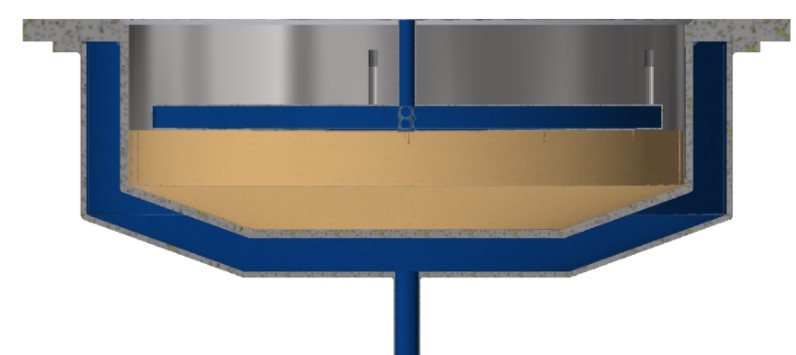LIVE-Core Catcher for SFR reactors
In-vessel Core-catcher design is implemented in many sodium fast reactors (SFR) to protect the reactor vessel and to distribute the liquid melt. The new test facility, ESFR-LIVE, is concepted explicitly to study the heat transfer of the melt and the dissolution of the refractory wall material in the core catcher. The new facility adopts the geometry of core-catcher sidewall design. The inner diameter of the vessel in the cylinder part is 1 m. The height of the truncated crone part is 8 cm with inclined angle of 20°, and the total height of the cylindrical upper part is 30 cm. The test vessel is made of 15 mm stainless steel. A cooling vessel encloses the test vessel and forms a cooling channel with 6 cm width at the bottom and at the side wall. An existing cooling lid is applied to the top surface cooling.
Double tray Core-catcher design in SFR (left) – Carluec et al., 2019 -
and sketch of LIVE-Core Catcher (right).
Four planes of heating elements inside the vessel provide maximum 112 kW simulating the internal heat source of core material. With this power density certain scenarios of debris dryout can be realized. The LIVE-Core catcher is flexibly in cavity height and geometry by means of:
• By shutdown the lower heating elements, bottom crust grows upwards and reduces the height of the liquid pool in the lower part
• The heating elements in the cylinder part can be removed, enabling top cooling lid at a lower position
• The heating system can also heat solely axial central region, and thus it is interesting to study a debris bed in conic form or cylinder form.


